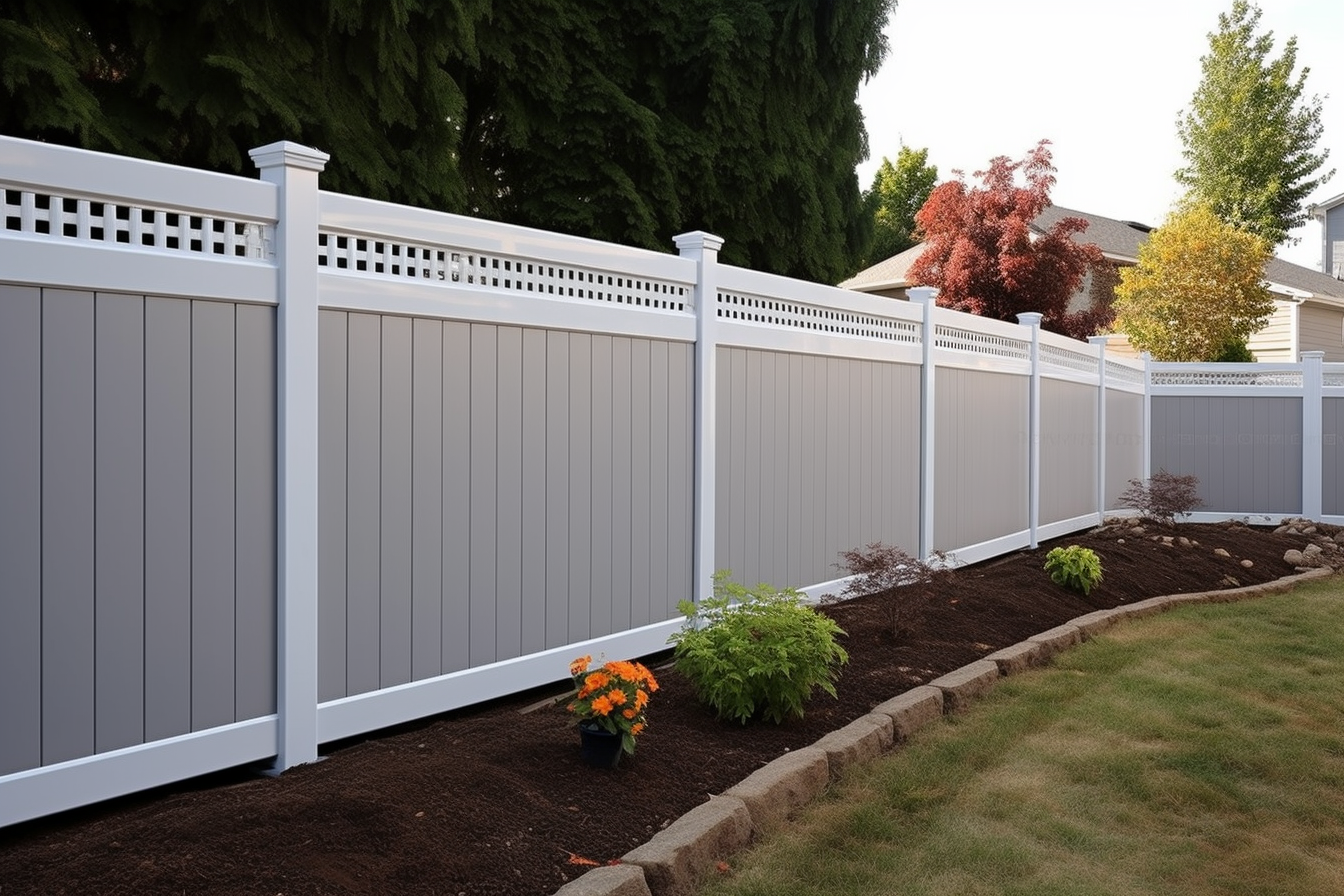Garden Fence Trends in 2025: Key Designs, Materials, and Homeowner Tips
Garden fences are evolving in 2025 with new designs and material choices offering both style and durability. Homeowners can learn about the differences between wood and metal, what to consider for their property, and how to make informed decisions for their garden.

The landscape of residential fencing is experiencing notable shifts as homeowners prioritize sustainability, low maintenance, and design versatility. Modern garden fences serve multiple purposes: defining boundaries, enhancing privacy, providing security, and complementing landscaping. The choices available today reflect broader trends in home improvement, environmental consciousness, and technological advancements in materials science.
How Garden Fence Designs Are Changing
Contemporary fence designs are moving away from purely utilitarian structures toward integrated landscape elements. Horizontal slat fencing has gained popularity, offering a modern alternative to traditional vertical pickets. Mixed-material designs combining wood with metal or composite panels create visual interest while addressing specific functional needs. Modular fence systems allow homeowners to customize height, spacing, and panel configurations to suit individual property requirements. Laser-cut metal panels featuring geometric or natural patterns provide privacy without completely blocking airflow or light. Living fences incorporating climbing plants or integrated planter boxes blur the line between hardscaping and landscaping, creating dynamic boundaries that change with seasons.
Wood or Metal Fences Explained
The choice between wood and metal fencing involves weighing multiple factors beyond initial appearance. Wood fencing, particularly cedar and redwood, offers natural warmth and traditional appeal. These materials naturally resist decay and insect damage, though they require periodic sealing or staining to maintain appearance and extend lifespan. Pressure-treated pine provides a more economical wood option but demands regular maintenance. Metal fencing encompasses several categories: aluminum offers lightweight durability with minimal maintenance and resists rust, making it suitable for humid climates. Steel fencing provides superior strength and security but requires protective coatings to prevent corrosion. Wrought iron delivers classic elegance with exceptional longevity when properly maintained. Composite materials combining wood fibers with plastic polymers have emerged as alternatives that mimic wood aesthetics while offering enhanced weather resistance and reduced maintenance requirements.
What Homeowners Should Know About Fences
Before installation, homeowners must navigate several practical considerations. Local zoning regulations and homeowner association rules often dictate fence height, setback distances from property lines, and approved materials or colors. Property surveys ensure fences are placed within legal boundaries, preventing disputes with neighbors. Underground utility locations must be identified before post installation to avoid damaging electrical, gas, water, or communication lines. Soil conditions affect post stability and may require concrete footings or specialized anchoring systems. Terrain slopes necessitate stepped or racked fence designs to maintain consistent height while following ground contours. Climate factors influence material selection, as extreme temperature fluctuations, high winds, salt exposure, or heavy precipitation impact fence longevity differently across materials.
Tips for Choosing the Right Fence
Selecting appropriate fencing begins with clarifying primary objectives. Privacy fences typically feature solid panels or closely spaced pickets reaching six to eight feet in height. Security fencing prioritizes strength and height, often incorporating pointed tops or anti-climb features. Decorative fences emphasize aesthetic contribution to landscape design, potentially sacrificing some privacy or security for visual appeal. Maintenance tolerance significantly influences material selection, as wood requires regular treatment while vinyl, aluminum, and composite options need only occasional cleaning. Budget considerations extend beyond initial installation costs to include long-term maintenance expenses and expected replacement timelines. Neighborhood context matters, as fence style should complement surrounding architecture and landscaping rather than clash with established visual character. Gate placement and width must accommodate equipment access for lawn maintenance, deliveries, or future renovation projects.
Installation costs vary considerably based on material choice, fence height, linear footage, terrain complexity, and regional labor rates. Professional installation for wood fencing typically ranges from $15 to $45 per linear foot, depending on wood species and design complexity. Vinyl fencing installation generally costs $20 to $40 per linear foot, reflecting material expenses and specialized installation techniques. Aluminum fencing runs $25 to $50 per linear foot for standard styles, with ornamental designs commanding premium pricing. Chain link fencing offers the most economical option at $8 to $20 per linear foot, though it provides minimal privacy. Composite fencing represents a higher initial investment at $25 to $60 per linear foot but reduces long-term maintenance costs. These figures represent general market ranges and fluctuate based on local market conditions, contractor availability, and project-specific requirements.
| Material Type | Cost per Linear Foot | Maintenance Level | Expected Lifespan |
|---|---|---|---|
| Pressure-Treated Wood | $15-$25 | High | 15-20 years |
| Cedar Wood | $25-$40 | Moderate | 20-30 years |
| Vinyl | $20-$40 | Low | 25-30 years |
| Aluminum | $25-$50 | Low | 30-50 years |
| Composite | $25-$60 | Low | 25-40 years |
| Chain Link | $8-$20 | Low | 20-30 years |
Prices, rates, or cost estimates mentioned in this article are based on the latest available information but may change over time. Independent research is advised before making financial decisions.
Environmental considerations increasingly influence fencing decisions as sustainability awareness grows. Reclaimed wood offers character and reduces demand for newly harvested timber. Bamboo fencing provides a rapidly renewable alternative with natural durability in appropriate climates. Recycled composite materials divert plastic waste from landfills while creating long-lasting fence products. Locally sourced materials reduce transportation environmental impact and often better suit regional climate conditions. Some manufacturers now offer fencing products with third-party environmental certifications verifying responsible sourcing and manufacturing practices.
The intersection of technology and fencing introduces new possibilities for homeowners. Smart fence systems integrate sensors detecting breaches or impacts, sending alerts to smartphones. Solar-powered lighting built into fence posts or caps enhances nighttime visibility and security without requiring electrical wiring. Automated gate systems with remote or smartphone control add convenience for vehicle or pedestrian access. Weather-resistant cameras mounted on fence structures extend home security systems to property perimeters.
As garden fence options continue expanding, homeowners benefit from carefully evaluating how different materials, designs, and features align with specific property needs, aesthetic preferences, and long-term maintenance capabilities. The right fence enhances property value, improves outdoor enjoyment, and serves functional purposes for years to come when selected and installed thoughtfully.




